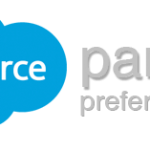
Account-based Marketing: The Facts Behind the Model’s Success
Most business leader would agree it’s challenging to coordinate campaigns between marketing and sales teams while giving each team the freedom to succeed in their roles. But what if there was a way to streamline coordination across sales and marketing while deepening the connection with individual client accounts at the same time? Impossible, surely.
Not so fast.
Account-based marketing (ABM) is the strategic process of coordinating sales and marketing campaigns to build a connection and deepen engagement at specific client accounts. It’s a process that helps teams develop customized campaigns by taking a look at the key business issues facing the account and then mapping issues to the individual and to the company with the goal of then tailoring solutions to these specific issues.
The best part of ABM?
This systematic approach to individual account management has been shown to significantly increase close rates and improve the speed at which deals are made, while providing for tighter integration between sales and marketing. With these key benefits derived from ABM, let’s take a look at our quick guide to the Account Based Marketing process.
Refined Account Selection Helps Shatter Sales Records
Account selection is the leading consideration within the ABM process. The goal of a company’s selection work is to maximize sales and marketing resources by channeling them into the accounts most likely to assure a lasting return on revenue. In selecting the ideal accounts for Account Based Marketing, it’s critical to consider the following questions:
- Which attributes comprise the best fit for our products?
- What kind of accounts have proven most profitable over time?
- Which accounts offer the best strategic value?
The company should also be looking at the latest data to ensure they choose the right account for their marketing processes. The question many will ask at this point is: “Which data?”.
There are four specific sets of data that should be considered – engagement data, intent data, firmographics and technographics.
Here’s the need-to-know information on data sets:
Engagement data is any information that highlights how involved the company is with that account right now. The metrics to measure through engagement data might include past sales, executive entry points or rep activity levels. This is the type of data that can be found within CRM systems, web analytics and marketing automation reports.
Intent data is the information highlighting the signs that the company is in the market for a similar product right now. This could include data showing a buying team is reviewing the marketplace. This type of data can be found on forums and job boards.
In reviewing firmographics, a company will look at the characteristics that best predict a successful sales process. This data might include information on the size of the company or the number of locations, or even its number of employees. Sources for this data could include LinkedIn or third-party data vendors.
Technographics includes the data on the technology the prospect is currently using or likely to invest in, and should include information on technology that rules out a specific product or solution, or technology that complements a potential addition to their infrastructure.
Why analyze this particular data?
In analyzing the data from these four sets, companies can distill the information by following a model that begins with their reps selecting data based on their experience working with their accounts. Then manually collected data can be analyzed, followed by advanced and purchased data. Finally, companies can harness sophisticated modeling and analysis to focus on accounts with the highest value.
Conquer Objectives with Relevant, Targeted Content
The key to creating quality content for an ABM program is to focus on audience engagement. What types of content are most likely to inspire action from each persona? Some are more likely to watch a 5-minute YouTube clip while others are more likely to read an eBook.
This cannot be stressed enough:
Choosing the content for each persona is a critical consideration. In creating content, it’s important teams know the types of resources they already have available and create content to fulfill missing links within their current messaging.
How?
Conduct a Full Content Audit
Oftentimes one of the reasons companies fail in their messaging when building an ABM strategy is they don’t take full advantage of the content they already have at their disposal. In crafting a content strategy, first conduct a full audit of already-available content. Complete the following steps during the audit process:
- Tag the content by account, persona, purchase stage and core customer issue
- Identify potential content gaps not filled by current content
- Identify content that requires simple revisions to make it relevant to a specific account
Once the content is sorted into these categories, companies can then begin crafting content for each account based on account themes and insights. This process requires content team managers to create a content calendar and then write content briefs that can then be assigned either to internal writing team members or outside specialists.
Craft a Content Playbook
To craft compelling content for each level of the sales process within the ABM program, companies must begin with a content playbook. This playbook maps messages to personas and product purchasing stages. Creating a playbook will help ensure that sales teams have access to the right information for each phase of their interactions with prospects.
Assure Consistent Results with Highly Specific Workflow Strategies
Rather than promoting messages to a wide audience and then filtering that audience based on response, companies following an ABM approach can conduct significant filtering before they interact with accounts. This involves creating a sophisticated multi-channel and multi-strategy process that initiates the conversation with a specific account and deepens the business relationship.
For example, rather than simply focus on email campaigns to compel a C-level executive to respond to a request, companies can use phone calls and other contact forms to determine which type of contact a specific type of persona prefers.
An example workflow strategy, in which a company is trying to reach out to a cold lead, might include the following steps:
- The setup process begins with aligning all campaign messaging around a common theme, business challenge or special offer.
- The first wave of targeting involves sending advertisements across social media and various web portals to soften the lead’s view of the company.
- The second wave includes outbound messaging, whereby executives receive a mail drop and then personalized contact from sales teams via email and phone, and managers receive a more limited mail drop followed by email outreach.
A Powerful Marketing Strategy for Attracting High Value, Devoted Clients
Account Based Marketing is helping growing organizations improve their return on marketing investment. It’s a process of focusing resources on select accounts, aligning sales and marketing teams, designing plans based on clear actionable data, and orchestrating communication with the most important decision-makers. Through an account-focused approach to marketing, organizations can transform flagging campaigns and build a replicable foundation for success in the long-term.
To learn more, call our trusted marketing experts directly.






